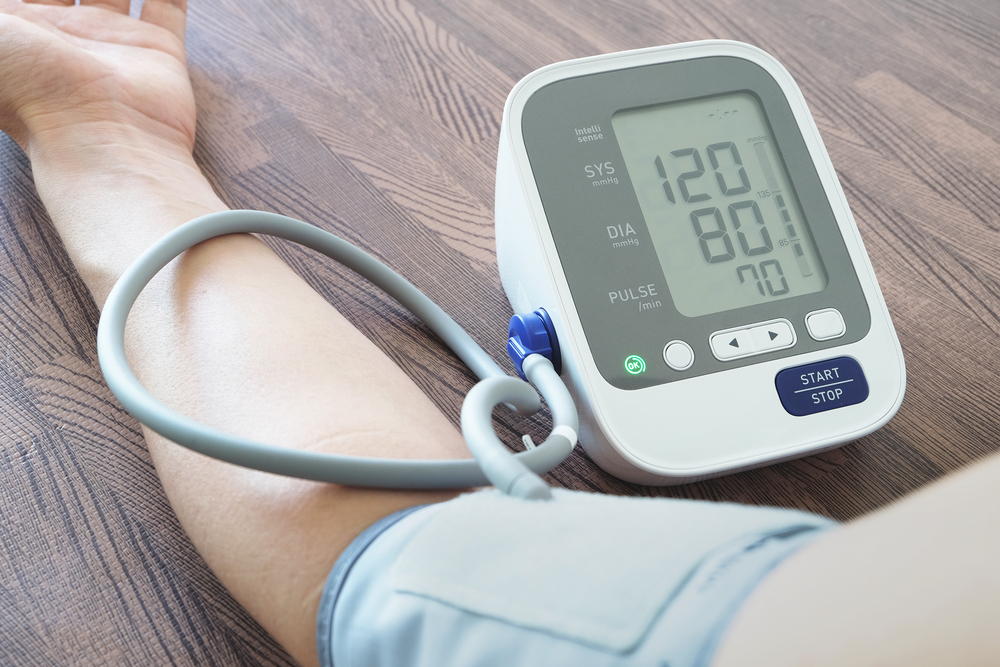World Hypertension Day is held on the 17 May of every year. This year’s theme for World Hypertension Day is to focus on the low awareness rates worldwide, and accurate blood pressure measurement. Blood pressure (BP) refers to the pressure exerted by blood on the wall of your blood vessel. It is measured using a device called a sphygmomanometer. Read on below to find out more on the importance of measuring your blood pressure accurately.
Why is measuring your blood pressure important?
Measuring your BP is important as it aids in early detection of BP-related medical conditions such as stroke or heart diseases. This allows for prevention measures to take place before it develops into actual complications.
This is especially so in the case of hypertension (high BP), which is often known as a ‘silent killer’. You may not experience any symptoms initially, but the high BP can silently damage your kidneys, brain, eye, and heart in the long run, if treatment was not given. Symptoms may manifest only in the late stages of organ damage.
BP monitoring is thus crucial to prevent and treat BP-related diseases.
Which instrument is used for measuring blood pressure and how does it work?
BP is measured with an instrument called a sphygmomanometer. It is made up of a cuff and a manometer. You will wear the cuff around one of your upper arm. The cuff is inflated until the artery in your arm is completely blocked and then the pressure is slowly released.
Your doctor will use a stethoscope to hear the whooshing or pounding sound to determine systolic and diastolic BP. Digital sphygmomanometer is also available in the market for you to measure your BP at home by yourself. You do not need a stethoscope to use the digital BP meter.
How to ensure accuracy when measuring blood pressure?
- Avoid drinking tea, coffee, energy drinks or other drinks with caffeine half an hour before measurement.
- Avoid smoking or exercising half an hour before measurement.
- Go to the toilet to relieve yourself before measurement.
- Sit calmly and relax for about 5 minutes before getting your BP checked. This can minimise any high BP due to stress or anxiety.
- During measurement, sit on a chair with your back straight, both feet on the floor and arm supported on a table so that your elbow is at your heart level.
- Use a cuff of appropriate size. A cuff that is too large will give falsely low readings. A cuff that is too small will give falsely high readings. The most practical way to size the cuff is to pick one that covers two-thirds of the distance between your elbow and shoulder.
- The cuff should be worn on bare skin. Do not place the cuff over a sleeve of a shirt or any cloth.
- Do not talk while measuring your BP.
- Repeat your BP check with an interval of 1-2 minutes. If the difference in blood pressure in the two readings is more than 5 mmHg, then get it checked the third time.
How to interpret your blood pressure readings?
Normal BP in a healthy adult is about 120/80 mmHg. The definition of normal BP varies with the age of an individual. BP rises with age because the blood vessels stiffen over time.
There are 2 readings on the BP meter:
- The upper number is known as the systolic BP. This indicates the pressure at which your blood is exerting against your artery when the heart beats.
- The lower number is known as the diastolic BP. This indicates the pressure your blood is exerting against your artery in between the heart beats
Pre-Hypertension
This occurs when your systolic BP is between 120-129 mmHg and your diastolic BP is >80 mmHg.
Hypertension
This occurs when your systolic pressure rises >130 mmHg or diastolic >80 mmHg. Hypertension is classified into two stages:
- Stage 1: Reading of systolic pressure is between 130-139 mmHg or diastolic reading is between 80-89 mmHg.
- Stage 2: Reading of systolic pressure is ≥140 mmHg, or diastolic pressure is ≥90 mmHg.
What is hypertensive crisis?
Hypertensive crisis occurs when systolic pressure is ≥180 mmHg, or diastolic pressure reading is ≥120 mmHg. You will require immediate treatment to lower the BP to prevent it from causing complications (such as stroke and/or organ damages).
Other FAQs
What to do if your BP is not normal?
Take a second reading after 1-2 minutes if your first reading is abnormal. If the second reading is also abnormal, then consult your physician. See medical treatment immediately if:
- Your BP is abnormally low
- Your BP is abnormally high
- You are experiencing symptoms like dizziness, headache, or change in vision
How often should you check your BP?
Check your BP every 2 years if your previous readings are normal. If your BP is borderline high (i.e. systolic BP 120-139 or diastolic BP 80-89 mm Hg), then get it checked at least every year.
If you have hypertension or other BP-related conditions, it is good to measure and record BP at home regularly between doctor visits. Ideally, measure your BP twice daily: once in the morning before eating or taking any medications, and once in the evening. Each time you measure, take two readings to make sure your results are accurate.
One-off measurements at the doctor’s office may not accurately reflect true BP. Such phenomenon is called white coat hypertension. White coat hypertension is a condition where patients experience stress or anxiety at a medical setting. This will result in a higher than normal BP reading during their visit. Such cases might lead to incorrect diagnosis and over-prescribing of medications.
Regular home measurement and documentation of BP is a reliable way of monitoring your condition and can guide physicians in adjusting medications.
Is abnormal BP dangerous?
Yes. Both acute and chronic excursions of BP are dangerous to your health. It can damage organs in your body like the eyes, heart, brain, and kidneys. If you seek appropriate medical advice and treatment, such complications can be prevented.
Article is written in conjunction with World Hypertension Day 2021.












